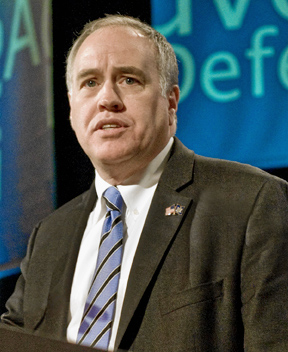Public employee groups, businesses and lawmakers all hotly debated a Nevada bill this week that would make major changes to the state’s pension system.
The measure under scrutiny is Assembly Bill 190, which would close off the state’s defined-benefit system and funnel all new government hires into a hybrid plan that more closely resembles a 401(k).
The bill was proposed in late February by Assemblyman Randy Kirner [R].
More on how the pension system would look under the bill, from the Review-Journal:
Kirner said there would still be a defined benefit element to the plan worth 6 percent of an employee’s salary that would be paid by the public agency. This piece of the plan is intended to account for the fact that Nevada public employees do not pay into Social Security, he said.
The remainder of the retirement plan would be a defined contribution plan, with 6 percent being provided by the state or local government agency and another 6 percent coming from the employee.
For police and fire, the defined contribution rate would be 9 percent each from the employer and employee.
At the hearing this week, state businesses were supportive of the measure.
But public employee groups argued against the bill, saying the changes would make it harder to recruit talented workers.
Tina Leiss, a top official at the Nevada Public Employee Retirement Systems, also spoke against the bill.
The bill is still in committee. Read the text of the bill here.
Photo credit: “Flag-map of Nevada” by Darwinek – self-made using Image:Flag of Nevada.svg and Image:USA Nevada location map.svg. Licensed under CC BY-SA 3.0 via Wikimedia Commons – http://commons.wikimedia.org/wiki/File:Flag-map_of_Nevada.svg#mediaviewer/File:Flag-map_of_Nevada.svg



